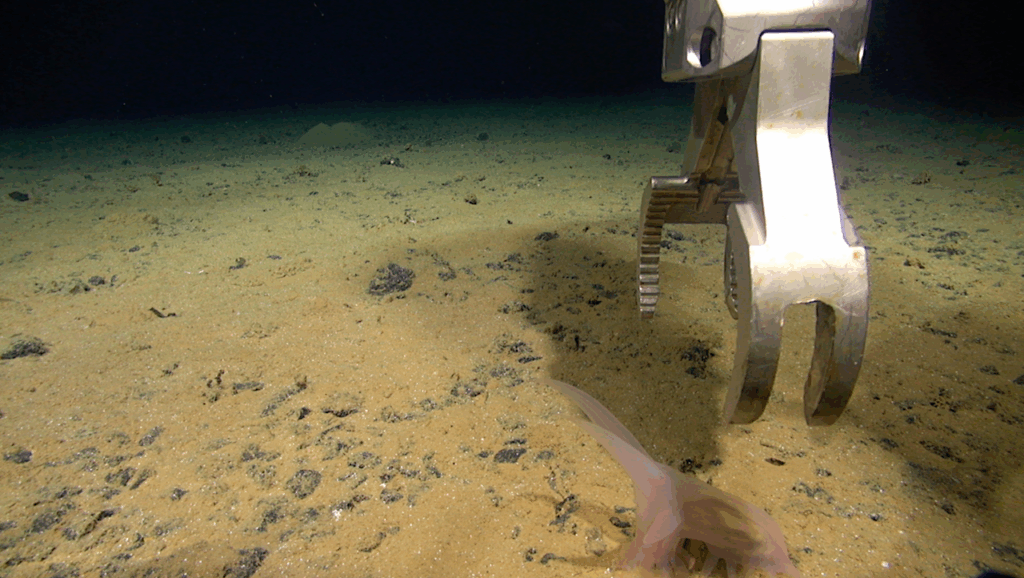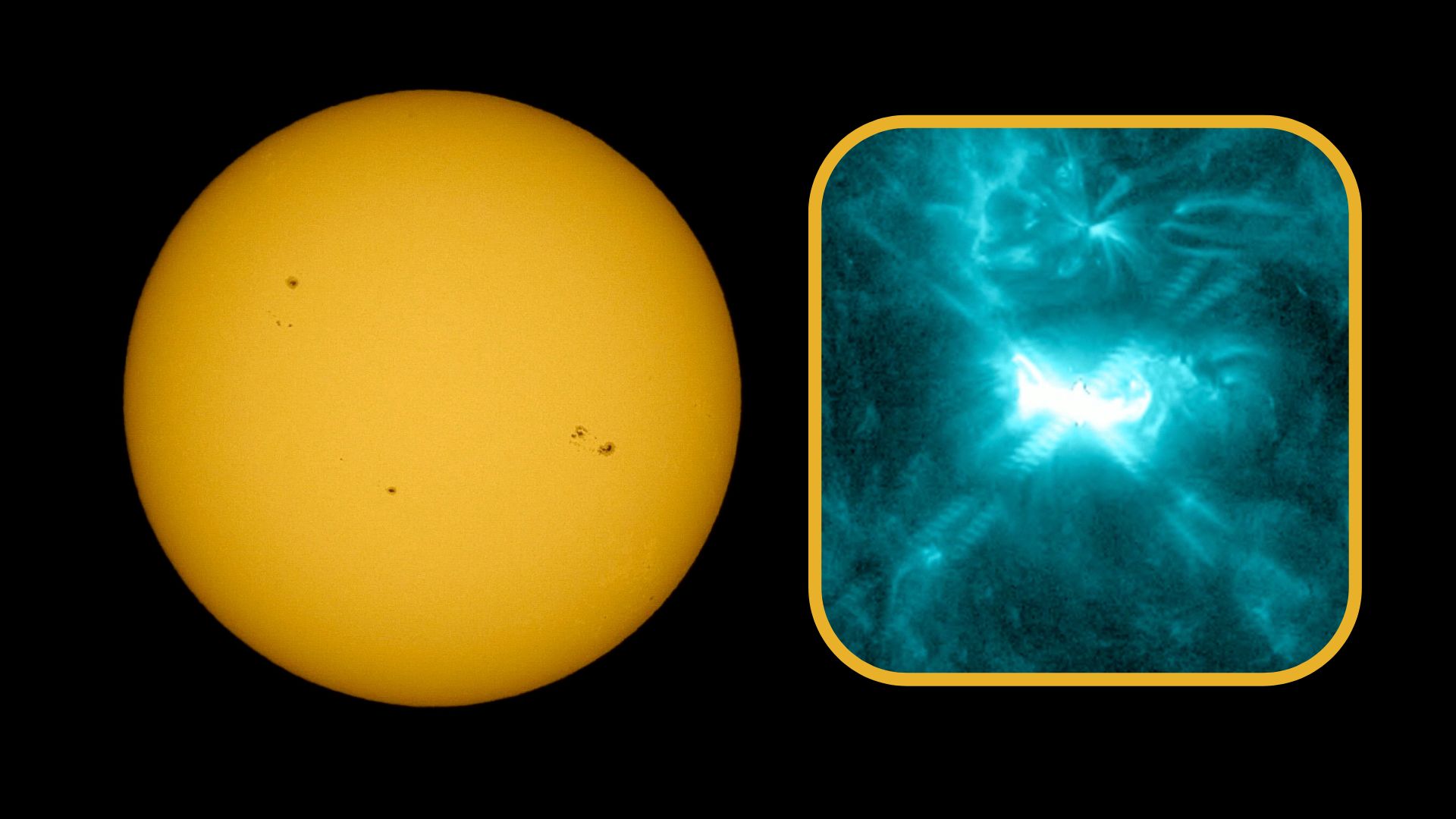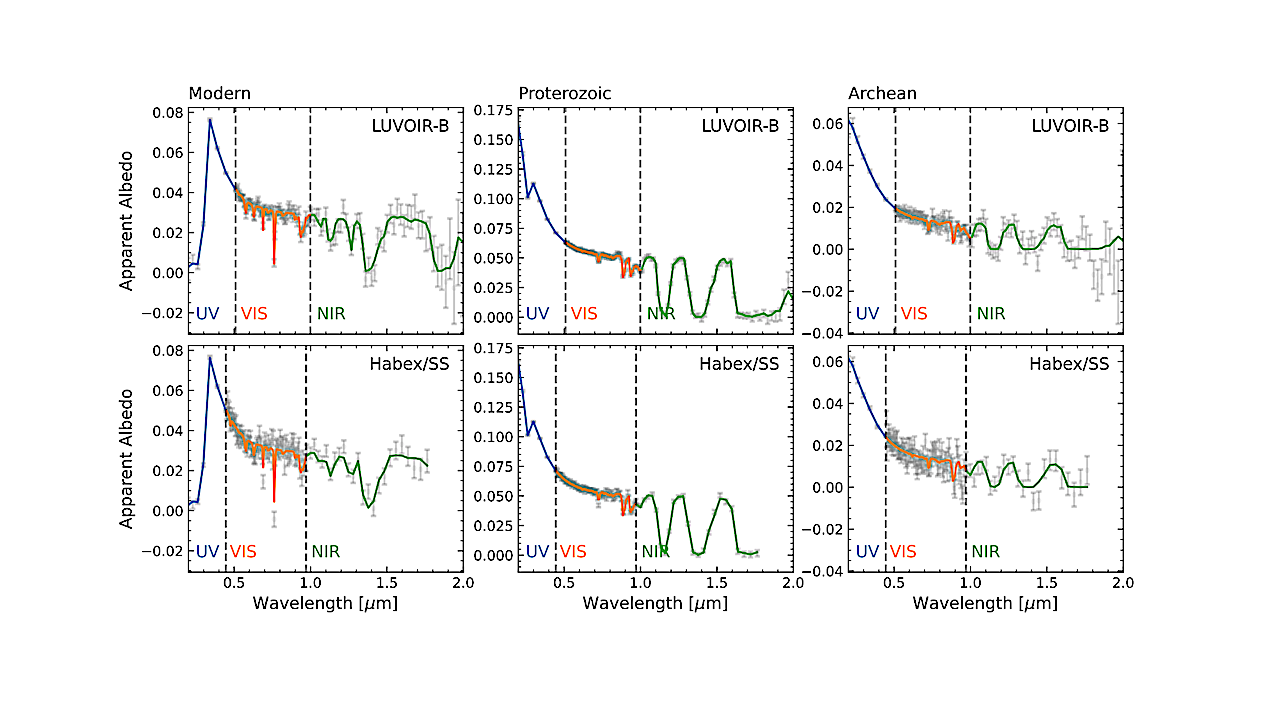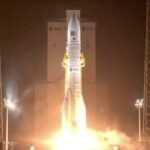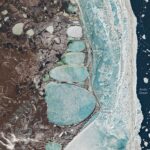Now Reading: Dark Wounds On Icy Moons: Ganymede’s Subsurface Ocean As A Dark Matter Detector
-
01
Dark Wounds On Icy Moons: Ganymede’s Subsurface Ocean As A Dark Matter Detector
Dark Wounds On Icy Moons: Ganymede’s Subsurface Ocean As A Dark Matter Detector
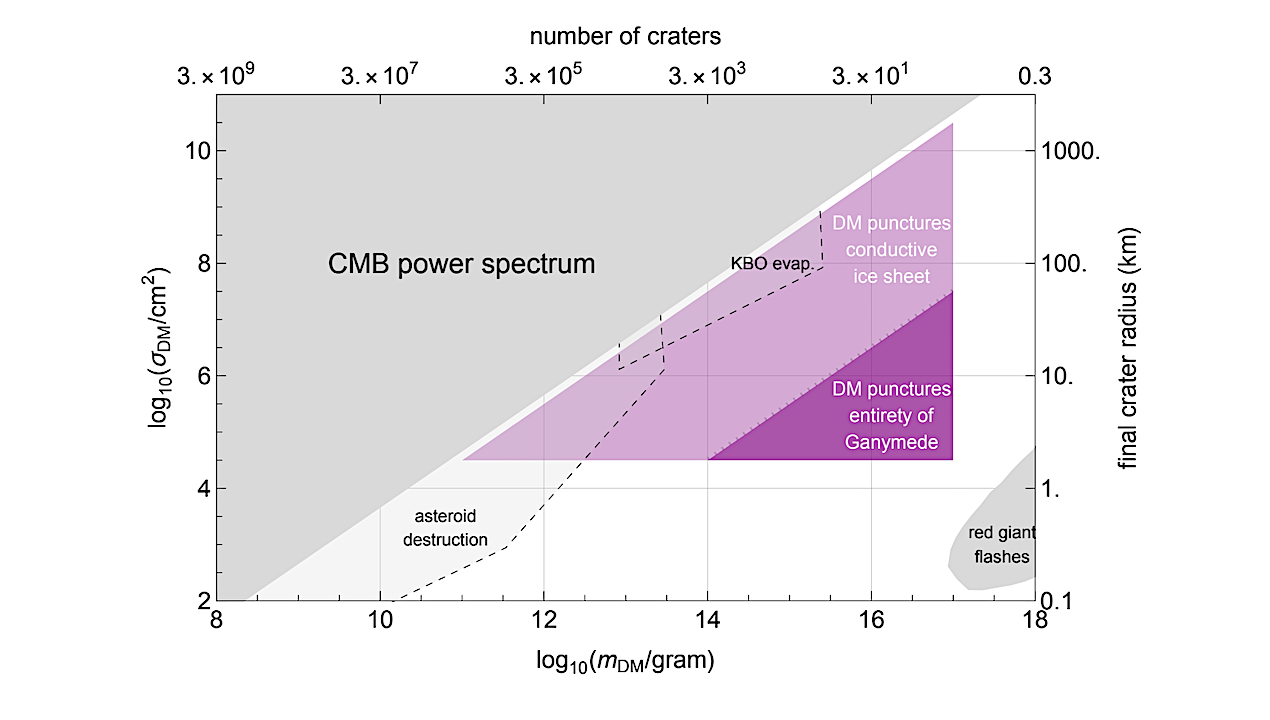
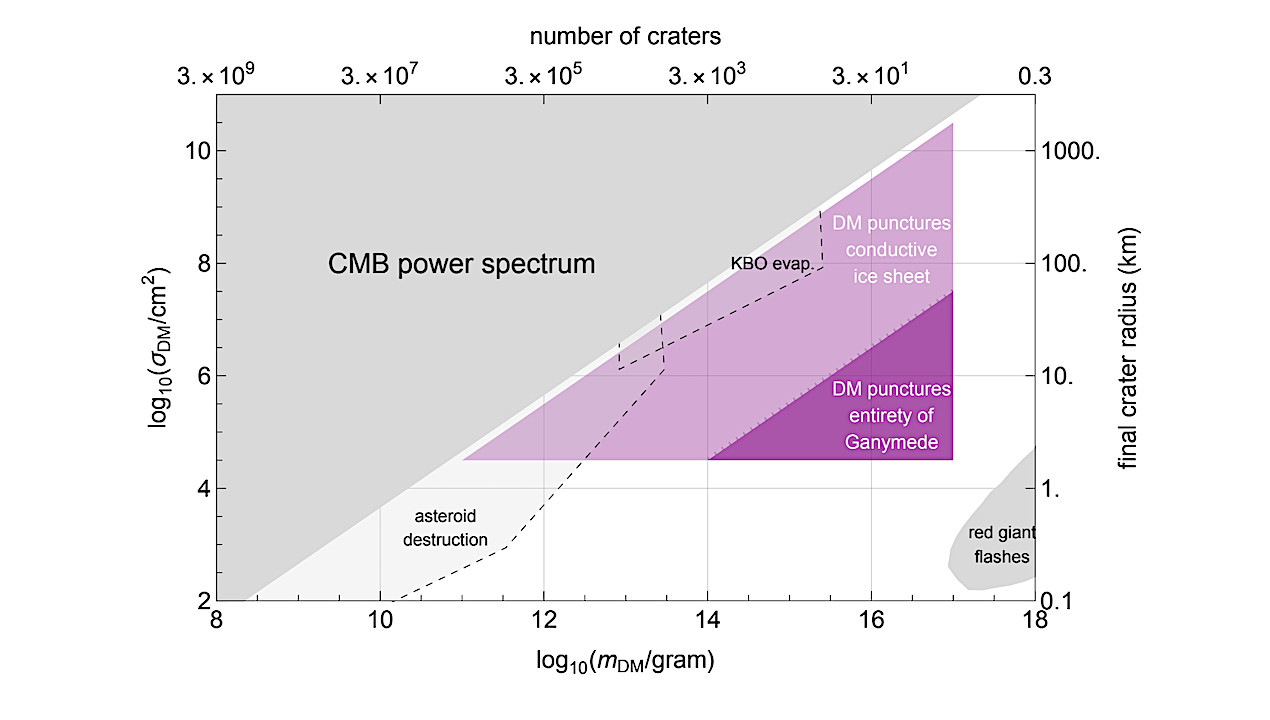
The region in which dark matter impacts may leave detectable surface features on Ganymede. Gray regions correspond to existing constraints [33, 35, 37]. The light purple region is the region in which the dark matter has sufficient initial energy to penetrate through the 12 km conductive ice layer on Ganymede’s surface. The darker purple region corresponds to when the dark matter penetrates the entirety of Ganymede, leaving both an entrance and exit wound. Rough estimates for the approximate number of craters and crater radius from Eqs. 1 and 13 are provided on the top and right axes respectively, rounded to one significant figure for readability. — astro-ph.EP
Dark matter in the form of macroscopic composites is largely unconstrained at masses of ∼1011−1017 g. In this mass range, dark matter may collide with planetary bodies, depositing an immense amount of energy and leaving dramatic surface features that remain detectable on geological timescales.
In this paper, we show that Ganymede, the largest Jovian moon, provides a prime target to search for dark matter impacts due to its differentiated composition and Gyr-old surface. We study the effects of dark matter collisions with Ganymede first with analytic estimates, finding that in a large region of parameter space, dark matter punches through Ganymede’s conductive ice sheet, liberating sub-surface material.
This sub-surface material may be compositionally different from the surface ice, providing a key observable with which to discriminate asteroid impacts from those caused by dark matter. We confirm our analytic estimates with dedicated simulations of dark matter impacts using iSALE, a multi-material impact code.
We then discuss potential detection prospects with two missions currently en route to the Jovian system, Europa Clipper and JUICE, finding that these missions may have the ability not only to identify signs of life on the Galilean moons, but signs of dark matter as well.
William DeRocco
Comments: 10 pages, 4 figures
Subjects: High Energy Physics – Phenomenology (hep-ph); Cosmology and Nongalactic Astrophysics (astro-ph.CO); Earth and Planetary Astrophysics (astro-ph.EP)
Cite as: arXiv:2508.00054 [hep-ph] (or arXiv:2508.00054v1 [hep-ph] for this version)
https://doi.org/10.48550/arXiv.2508.00054
Focus to learn more
Submission history
From: William DeRocco
https://arxiv.org/abs/2508.00054
Astrobiology
Stay Informed With the Latest & Most Important News
-
 012024 in Review: Highlights from NASA in Silicon Valley
012024 in Review: Highlights from NASA in Silicon Valley -
 02Panasonic Leica Summilux DG 15mm f/1.7 ASPH review
02Panasonic Leica Summilux DG 15mm f/1.7 ASPH review -
 03From Polymerization-Enabled Folding and Assembly to Chemical Evolution: Key Processes for Emergence of Functional Polymers in the Origin of Life
03From Polymerization-Enabled Folding and Assembly to Chemical Evolution: Key Processes for Emergence of Functional Polymers in the Origin of Life -
 04How New NASA, India Earth Satellite NISAR Will See Earth
04How New NASA, India Earth Satellite NISAR Will See Earth -
 05And Thus Begins A New Year For Life On Earth
05And Thus Begins A New Year For Life On Earth -
 06Astronomy Activation Ambassadors: A New Era
06Astronomy Activation Ambassadors: A New Era -
07SpaceX launch surge helps set new global launch record in 2024














